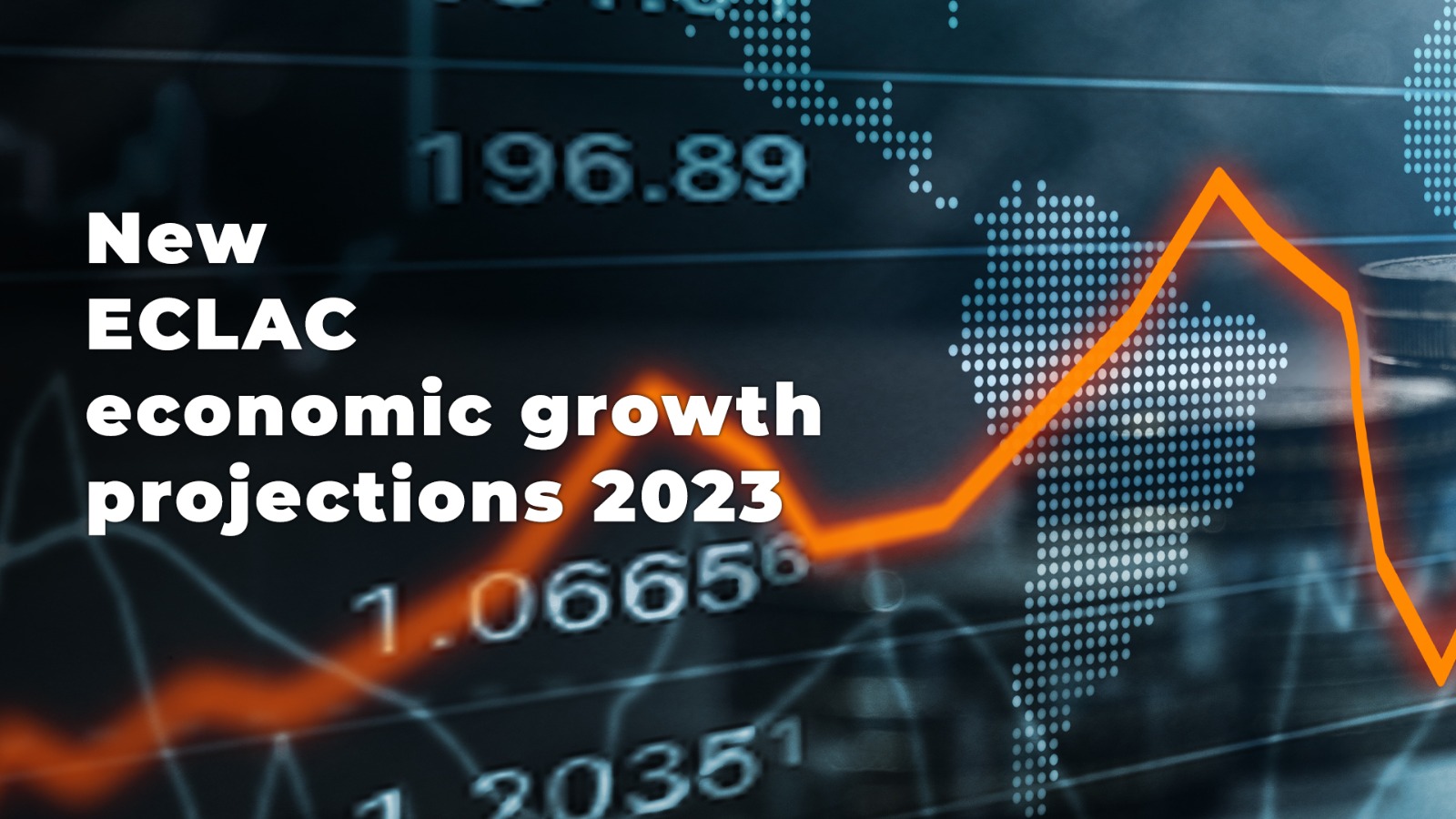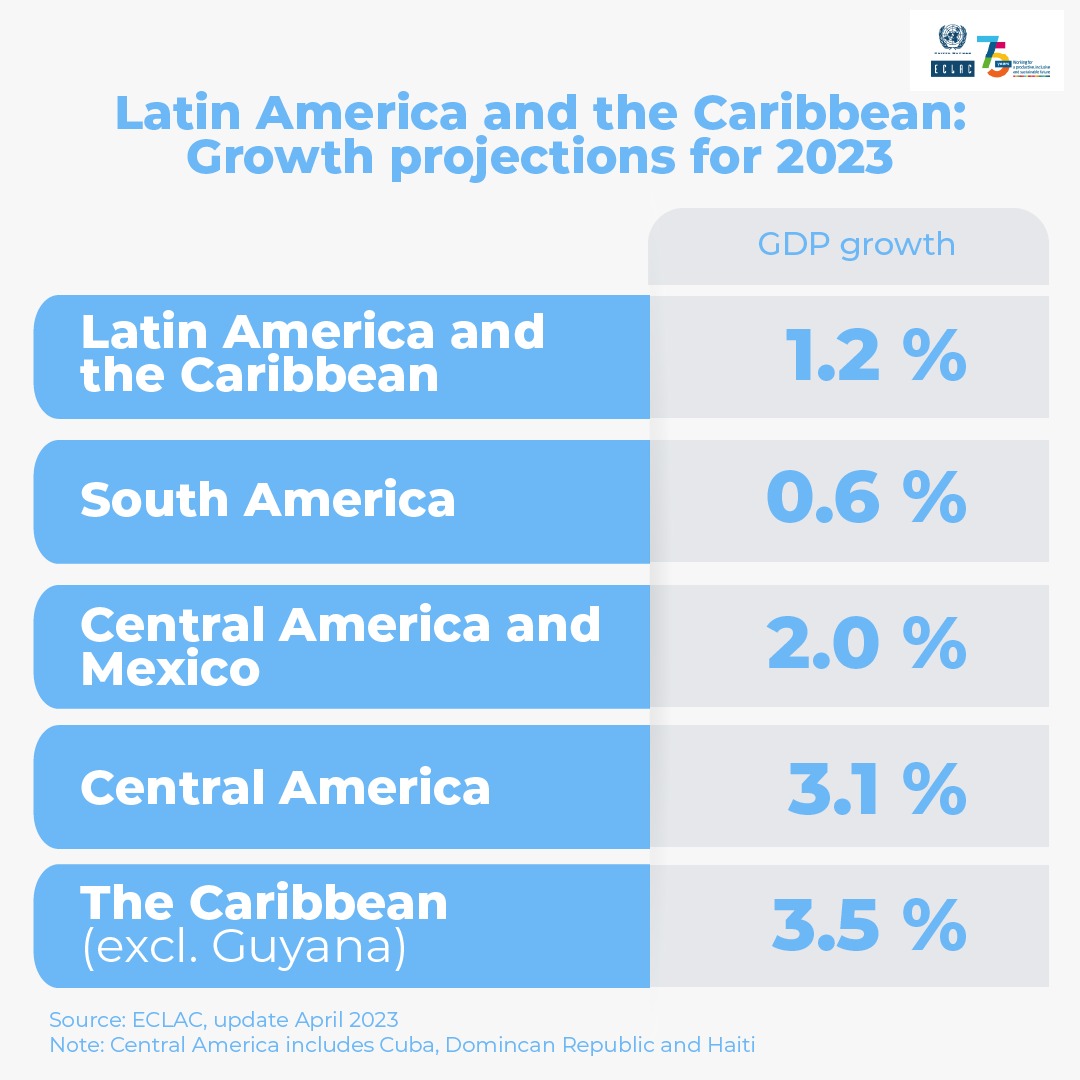Economies of Latin America and the Caribbean Will Grow by 1.2% in 2023 in a Context of Growing Uncertainties
Work area(s)
New projections released today by ECLAC estimate that all the subregions will experience lower growth this year compared with 2022.

The economies of Latin America and the Caribbean are facing a complex external scenario in 2023, marked by low growth in economic activity and global trade. In addition, the interest rate hikes carried out globally were compounded by the financial turbulence seen in early March, which has increased uncertainty and volatility in financial markets. Although inflationary pressures have slowed, monetary policy rates are expected to remain high throughout 2023 in the main developed economies.
In this context of growing external uncertainties and domestic restrictions, ECLAC expects the slowdown in economic growth to deepen in Latin America and the Caribbean in 2023, reaching a rate of 1.2%.
According to the Economic Commission for Latin America and the Caribbean (ECLAC), the region’s countries are facing limited space for fiscal and monetary policy once again in 2023. As in the rest of the world, inflation in the region is exhibiting a downward trend, and while the process of interest rate hikes in several of the region’s countries is expected to end soon, the effects of this restrictive policy on private consumption and investment will be felt more strongly this year, due to the lag time with which monetary policy acts. In addition, given the recent global financial volatility related to problems at banks in developed countries, and given that regional inflation is seen remaining high in comparison with pre-pandemic levels, a monetary easing cycle is not expected to take hold yet in the region.
With regard to fiscal matters, authorities have little leeway as long as public debt levels remain high. In a context of high demand for public spending, measures will be needed to strengthen fiscal sustainability and expand fiscal space by strengthening the taxation policy’s revenue-raising and redistributive capacity, the organization warns.
The United Nations regional commission estimates that all of the subregions will experience lower growth in 2023 versus 2022. South America will grow by 0.6% in 2023 (versus 3.8% in 2022); the group made up of Central America and Mexico will expand by 2.0% (in comparison with 3.5% in 2022); and the Caribbean (without including Guyana) will grow by 3.5% (in comparison with 5.8% in 2022).
South America will be affected by the drop in commodities prices and by restrictions on the space that domestic policy has for bolstering activity. High inflation has had an impact on real income, and this is having effects on private consumption and investment in the subregion’s countries.
In the Caribbean economies, the deceleration forecast for 2023 is due mainly to the fact that inflation has affected both real income – and with it, consumption – as well as production costs, with a negative impact on the competitiveness of exports, both of goods as well as tourism.
Finally, for the economies of Central America and Mexico, although growth this year represents a deceleration from 2022, in some cases ECLAC has upwardly revised the estimates it made at the end of last year. This is due to the upward revision of growth in the United States, which is the main trading partner and top source of remittances for these countries, which would affect both the external sector as well as private consumption. In addition, the lower energy prices foreseen for this year in comparison with 2022 are expected to have a favorable effect, given that several of these economies are net importers of energy.
The 2023 growth projection for the region is subject to downside risks given the possibility that turbulence in the global banking system, or in the financial system as a whole, could return and intensify, which would lead to a longer-lasting tightening of global financial conditions, with the resulting impacts on the access to and cost of financing.
Along with these financial risks, uncertainty remains about the effects – on the world and on the region – that a possible prolongation of the war in Ukraine and increase in geoeconomic fragmentation could have on economic growth, commodities prices and global trade.

Country(ies)
- Latin America and the Caribbean
Contact
Public Information Unit
- prensa@cepal.org
- (56 2) 2210 2040